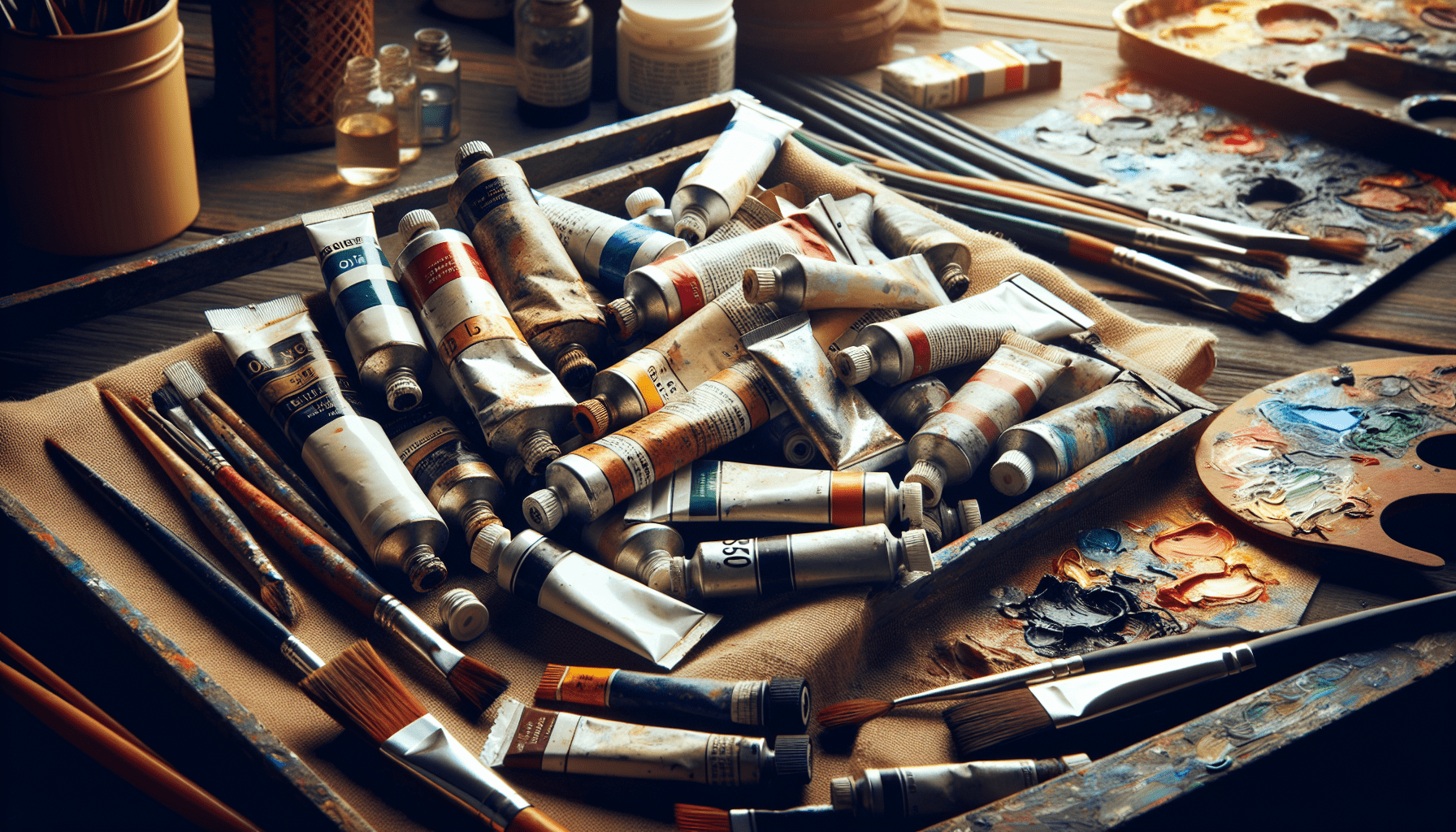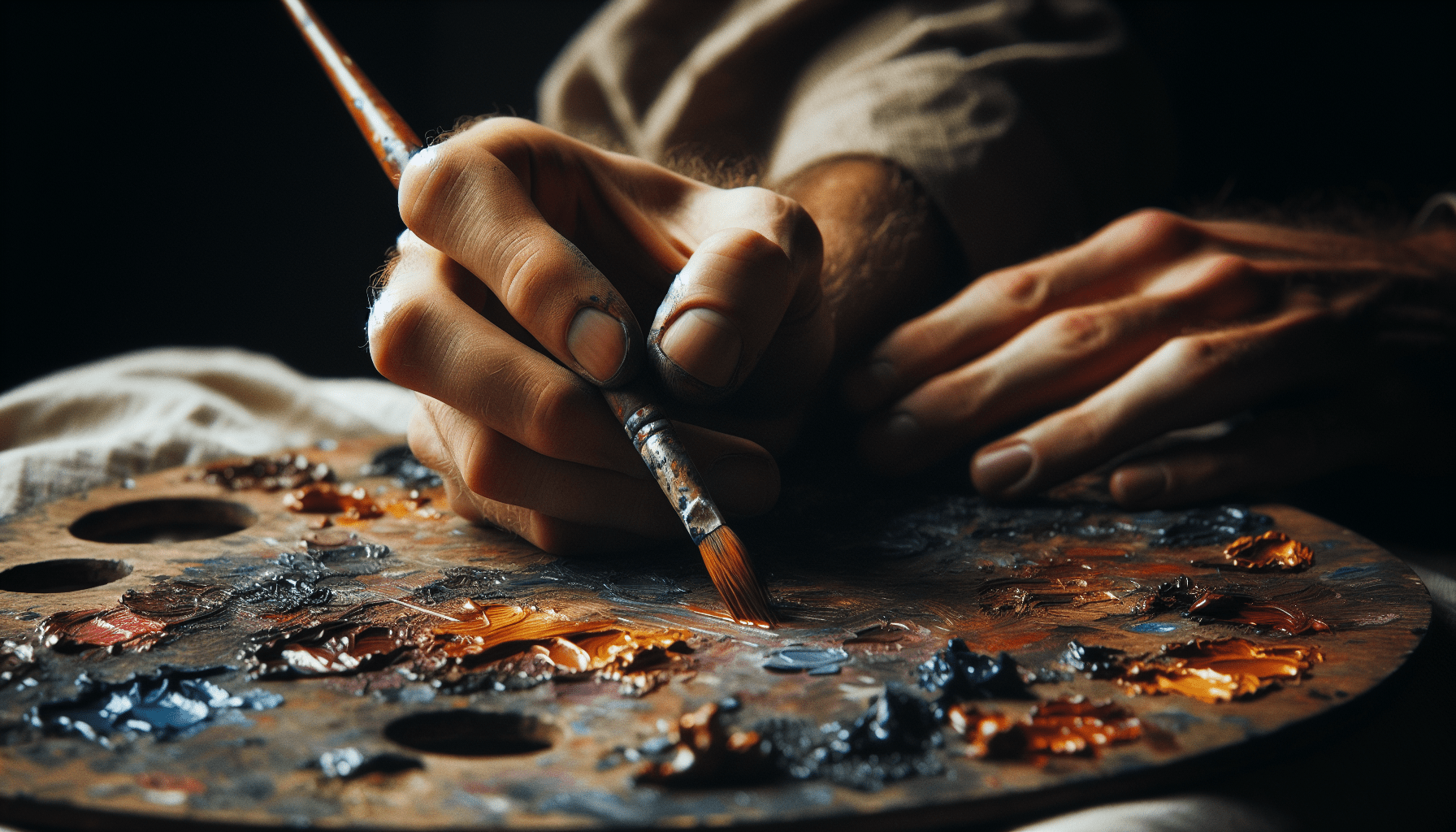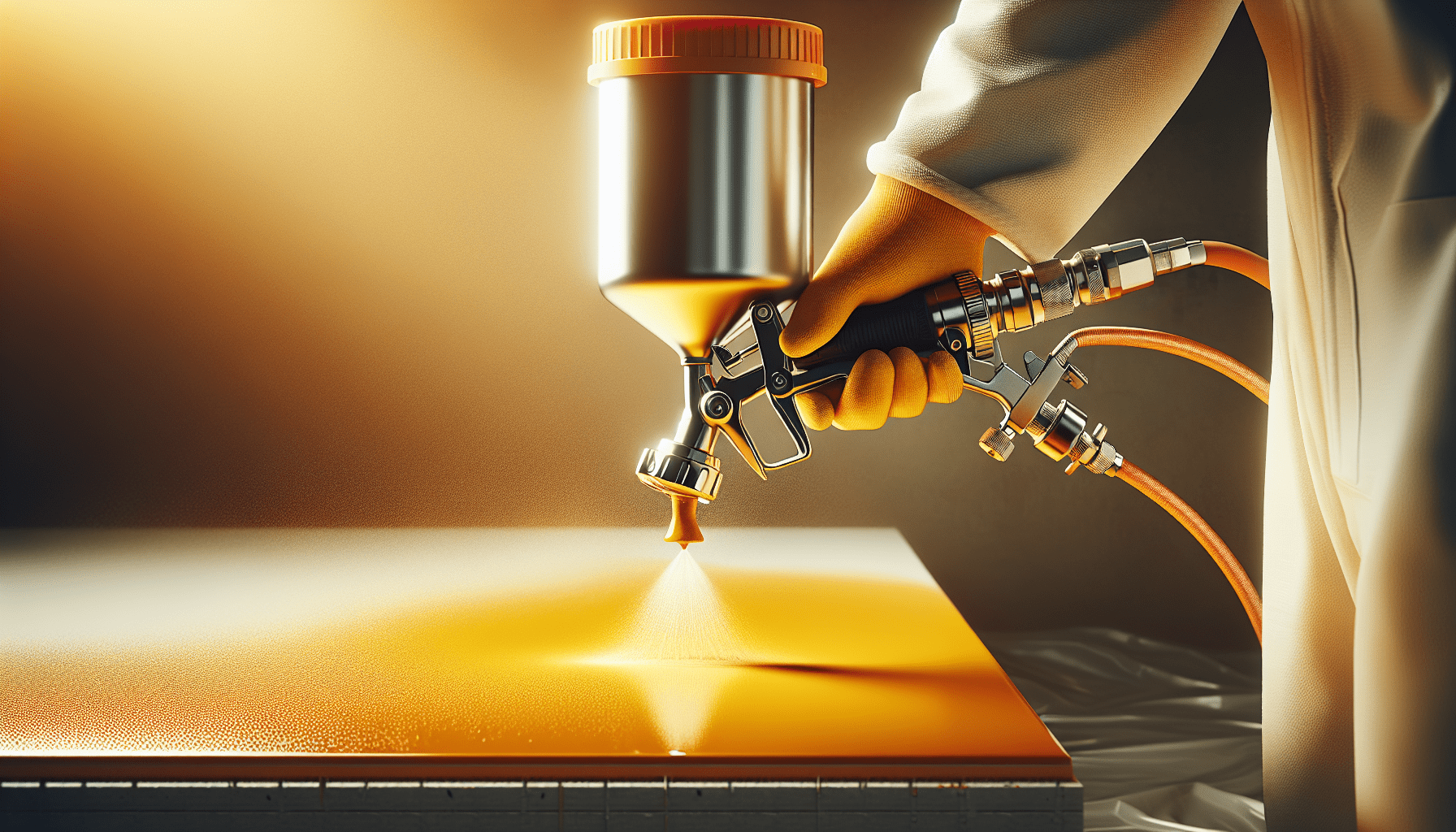In your pursuit of perfecting your artistic skills, you may find yourself questioning the longevity and usability of your supplies – specifically, oil paints. “Does Oil Paint Go Bad” is an insightful article that zeroes in on this pertinent question. Shedding light on the various factors that influence the lifespan of oil paint, it offers a thorough exploration of how elements such as storage, quality and age impact the viability of your paint. This article presents a well-researched, comprehensive understanding of the key aspects that will inevitably influence your creative process.
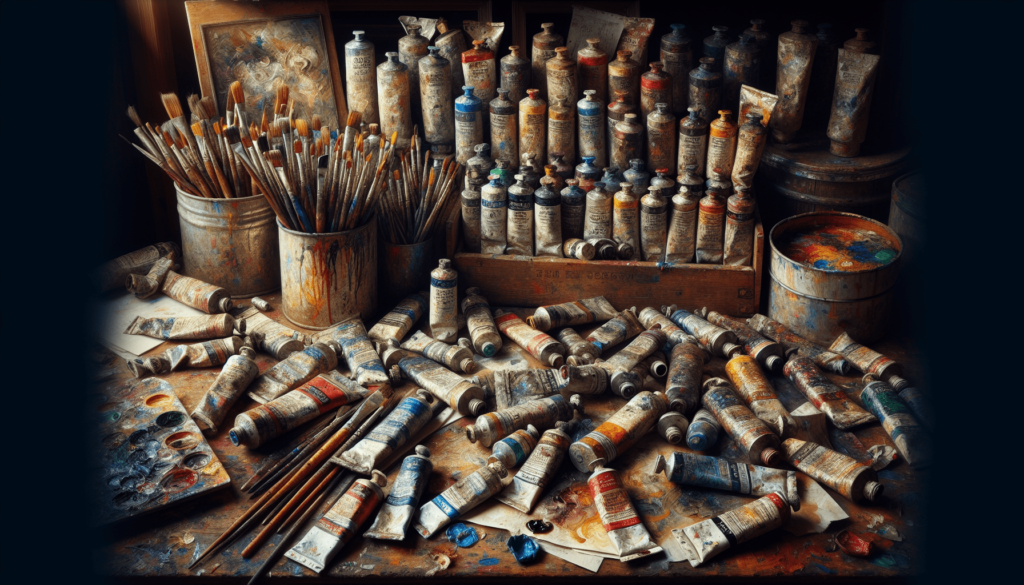
Factors Affecting Oil Paint’s Shelf Life
The longevity of your oil paint can be greatly influenced by a variety of factors. By understanding these, you can take steps to ensure the integrity and longevity of your art supplies.
Storage Conditions
The way you store your paints has a direct impact on its shelf life. For instance, keeping your paints in a dry, chill place can significantly extend their lifespan. On another note, excessively damp or humid environments can deteriorate the paint’s quality over time.
Exposure to Air
Oil paints dry when exposed to air. The introduction of air into the paint tube or jar results in oxidation, causing the paint to harden and become unusable over time. It’s crucial, therefore, to limit your paint’s exposure to air to increase its longevity.
Temperature
Temperature is another significant factor that affects oil paint’s shelf-life. Extreme temperatures, both hot and cold, can alter the paint’s consistency and speed up its expiration. High temperatures often make the paint more runny, while cold temperatures can cause it to thicken and harden.
Quality of Ingredients
The quality of the ingredients used in the production of oil paint also determines its shelf-life. For instance, paint made with high-quality pigments and oils is more likely to last longer than its cheaper counterparts. This is due to the higher resistance of superior quality oils to oxidation, thereby maintaining the paint’s optimal condition longer.
Signs of Bad Oil Paint
Identifying bad oil paint requires a discerning eye. Paying attention to the following signs will tell you when it’s time to replace your paint.
Thickened or Clumpy Texture
Oil paint should be smooth and easy to manipulate on your palette and canvas. If you notice your paint has become thick, clumpy or stiff, it’s a clear sign the oil has started to oxidize, rendering it less effective for painting.
Separation of Pigments and Oils
Oil paints are made by grinding pigments into oil. Over time, these substances can separate. If you notice clear liquid or a jelly-like substance at the top of your paint, this means the pigments and oils have separated. Although the pigment can be mixed back into the oil, the quality of the paint is likely diminished.
Off-putting Odor
A strong, unpleasant smell can be an indication that your oil paint has gone bad. This is usually due to the oxidative reaction of the oils in the paint, which can produce a rancid smell.
Inconsistency in Color
Oil paints are known for their vibrant and unchanging color. However, if your paint has darkened or discolored, it’s a sign that it’s no longer fit for use.
Effects of Using Bad Oil Paint
Using bad quality oil paint can have several detrimental effects on your artwork.
Difficulty in Mixing and Blending
Don’t underestimate the importance of smooth consistency in your paints. When paints go bad, they can become stiff and hard to manipulate, making it extremely hard to mix and blend.
Altered Drying Time
Bad oil paint can cause unpredicted drying times. It could suddenly become too quick-drying or not dry at all and remain tacky on your canvas.
Uneven Application
The texture of spoiled paint will result in patches and uneven application, leaving your painting surface looking rough and unsatisfactory.
Final Artwork Quality
Ultimately, the quality of your final artwork can suffer dramatically when working with spoilt paint. The vibrancy, texture, and dynamics may be compromised, leaving you with a less satisfying end result.
Storing Oil Paint Properly
To keep your paints in optimum condition, proper storage is key.
Sealing Tubes and Jars
Always make sure the tubes and jars containing your paint are tightly sealed. This prevents air from seeping in and initiating the drying process.
Avoiding Exposure to Air and Light
Exposing your paints to air and light can speed up the drying or degeneration process. Hence, it is advisable to store your paints in a cool, dark place.
Maintaining Ideal Temperatures
Storing your paint in a location where the temperature doesn’t fluctuate excessively can help prolong its life. Room temperature (around 20°C or 68°F) is ideal.
Using Up Older Paints First
If possible, use your older paints first and keep the newer ones for later. This reduces the chances of your paint going bad before you have had the chance to use them.
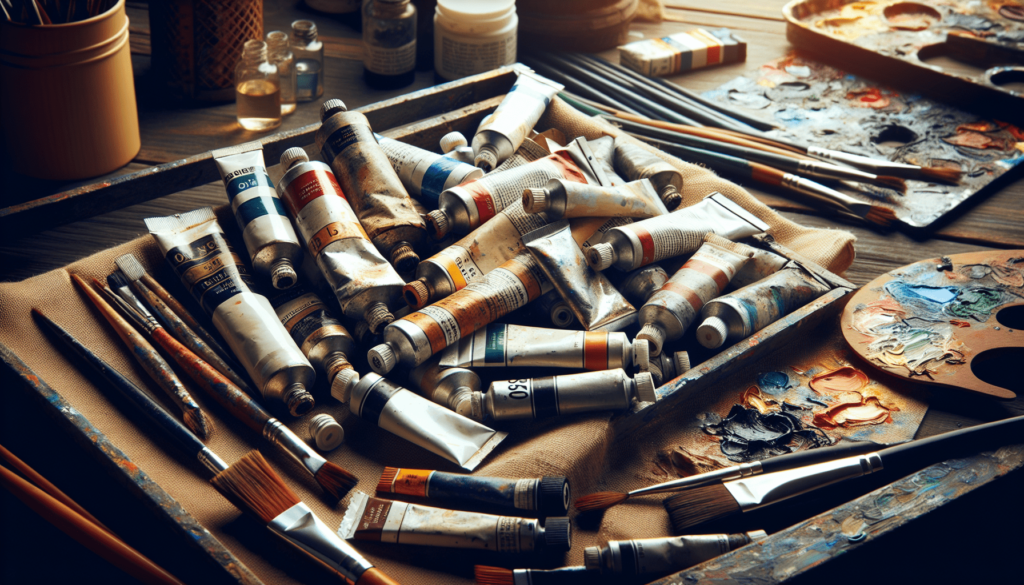
Extending Oil Paint’s Shelf Life
Apart from the above storage practices, you can adopt some measures to extend your paint’s service life.
Adding a Preservative
Preservatives can be added to your oil paints to inhibit bacterial growth and slow down the oxidation process, thus elongating their shelf life.
Using a Retarder or Medium
Retarders or mediums can also be incorporated into your paint to manage its drying time. By doing so, you can control the rate at which your colors become usable or unusable.
Keeping Tubes/Jars Clean
Keeping your paint tubes or jars clean can prevent contaminants from entering the paint and causing it to spoil.
Storing in a Fridge
Storing your paint in the fridge can slow down the drying process. However, do ensure that the paints are tightly sealed to prevent moisture from entering.
When to Discard Oil Paint
Though it may be difficult to part ways with your paint, disposing of spoiled paint is necessary.
Expired Paints
Pay close attention to the expiration dates indicated on your paint tubes or jars. Once the paint has exceeded that date, it’s best to discard it.
Mold Growth
If you spot any signs of mold or mildew, discard the paint immediately. Using moldy paint could introduce spores onto your canvas, potentially ruining your artwork.
Unusable Consistency
Should your paint acquire a hardened, lumpy consistency or separate into oil and pigment, it’s time to dispose of it.
Strong Rancid Odor
If your oil paint emits a strong off-putting odor, it’s best to discard it as this indicates the oil’s rancidity.
Proper Disposal of Expired Oil Paint
Expired oil paint should be properly disposed of considering their hazardous components.
Drying Out Paint
Before disposing of your expired paint, ensure that it is completely dry. Liquid oil paint is considered hazardous material and should not be tossed directly into the trash.
Solidifying the Remnants
Once the paint is dry, solidify the remnants by adding absorbent materials like cat litter or sand. This reduces the chances of the paint leaking into the environment.
Local Paint Recycling Programs
Some community centers and recycling facilities offer paint recycling programs. Look for one in your area and let them handle the disposal of your expired oil paints.
Disposing with Household Hazardous Waste
If all else fails, your expired oil paints should be disposed of along with your household hazardous waste.
Preventing Oil Paint from Going Bad
With a few precautionary measures, prolonging the life of your oil paints is fairly simple and straightforward.
Use Fresh, High-Quality Paints
Starting with fresh, high-quality oil paints is crucial. The better the quality of your base material, the longer it will last.
Avoid Contaminating with Water or Solvents
Ensure that your paint is not contaminated with water or solvents, as these can trigger spoilage.
Secure and Dry Storage Area
Storing your paints in a secure, dry space free from temperature fluctuations substantially slows down their deterioration.
Regularly Check Paint Inventory
Regularly check your paint inventory for signs of decay. Quickly identifying and disposing of bad paint can prevent it from spoiling the rest of your stash.
Frequently Asked Questions about Oil Paint Shelf Life
Can oil paint still be used even if it has gone bad?
In most cases, it’s not advisable to use bad oil paint. While you could potentially restore some usability, the paint will not perform as desired and can negatively impact your artwork.
Can I revive dried up oil paint?
Reviving dried up oil paint is tricky and the results may vary. While adding oil can restore some usability, it will not yield the same consistency and vibrancy as fresh paint.
How long can oil paint last?
When properly stored and kept free from contamination, oil paint can last up to 15 years or longer. However, once opened, a tube of oil paint should ideally be used within 1 to 2 years.
Does the brand of oil paint affect its shelf life?
Yes, the brand and quality of oil paint can influence its shelf life. High-quality paints with better ingredients tend to have a longer shelf life than their cheaper counterparts.
Conclusion
Maintaining the life of your oil paints ultimately comes down to how well you store and use them. By taking care of your oils, using them in a timely manner, and adhering to prescribed storage practices, you can ensure a satisfactory shelf life for your paints. By understanding the signs of deterioration and knowing when to let go of spoilt paint, you’ll be sure to get the most out of your art materials, and create artworks that stand the test of time.
